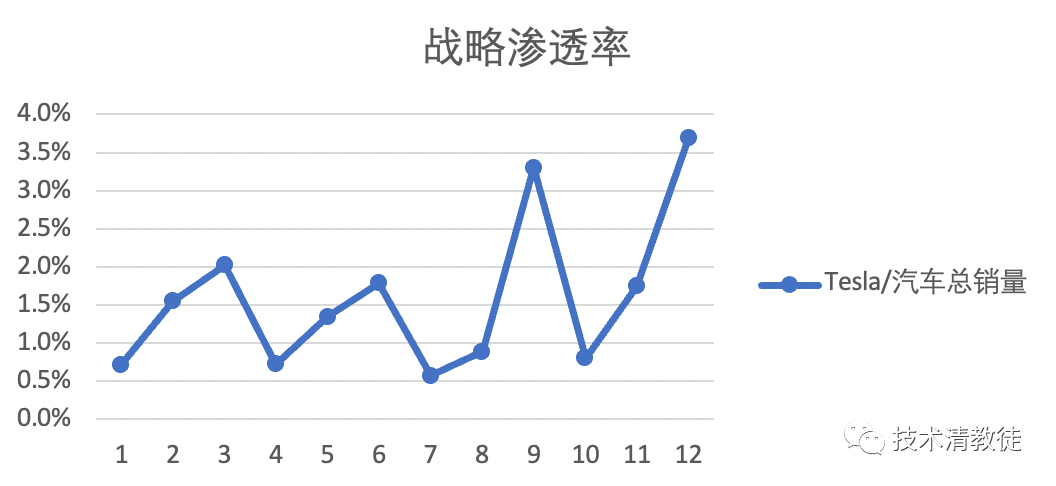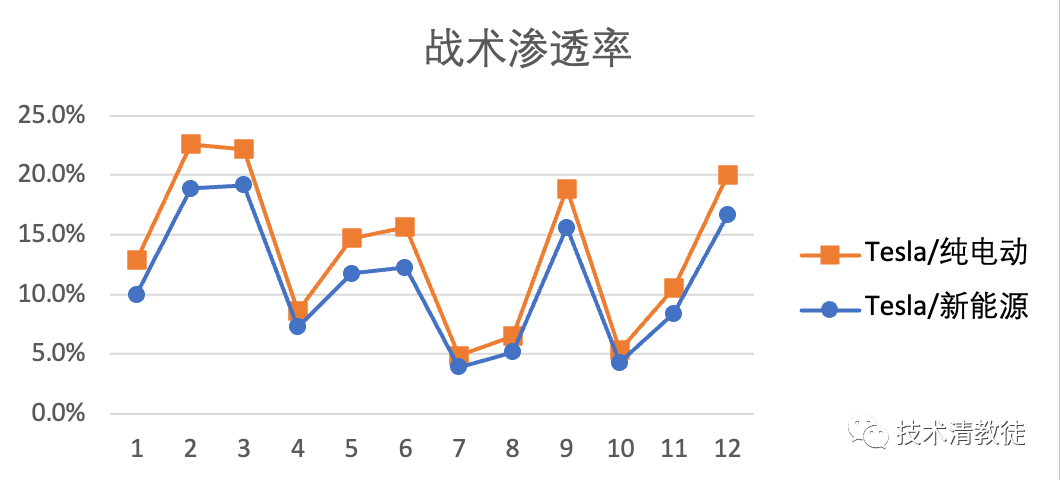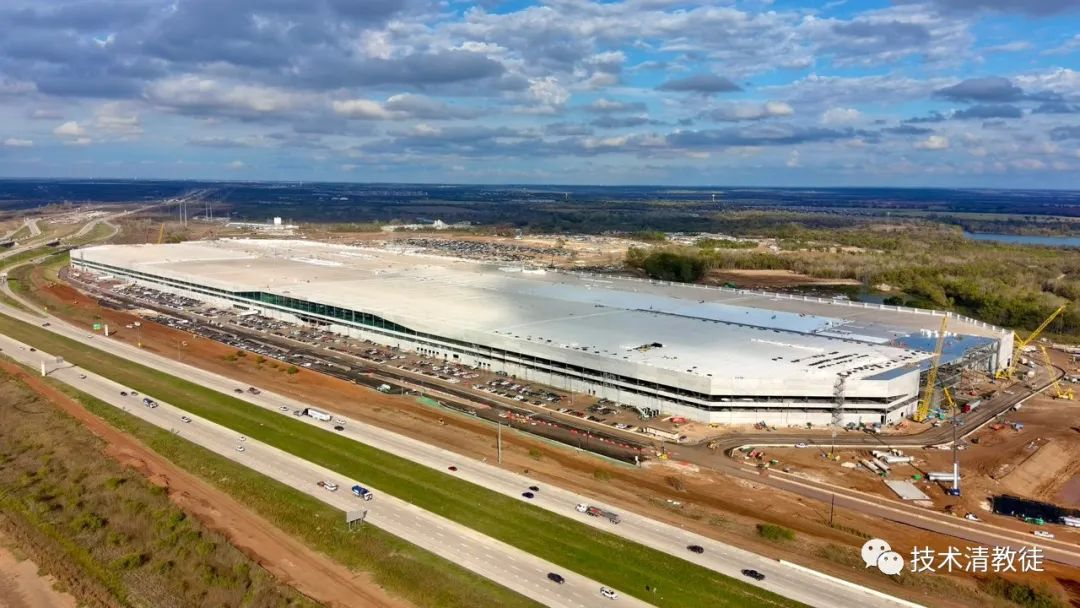Translated English Markdown Text:
Body:
Total Word Count: 952
Estimated Reading Time: 7 minutes
It must be said that Tesla’s team is really great, with excellent production and delivery performance in Q4. Congratulations to them for their hard work and achievements!
Firstly, let’s talk about two big numbers. In Q4, a total of 308,600 vehicles were delivered, compared to last year’s total of 936,172 vehicle deliveries. Compared to the total number of 499,550 vehicles in the previous year, it increased by 87%.
Next, let’s first analyze Tesla’s market share in China, look at the production situation of the Shanghai Super Factory, and finally make a simple range prediction of this year’s delivery numbers.
The two tables below are based on actual data. The first “Strategic Penetration Rate” refers to the proportion of new Tesla vehicles in the total sales of cars. It can be seen clearly that Tesla’s penetration rate is steadily increasing and reached nearly 4% at the end of the year. As China increasingly moves towards electrical transformation and relies more on product competitive advantages to win consumers, there is reason to believe that this ratio will continue to rise.

The second “Tactical Penetration Rate” refers to the proportion of new Tesla vehicles in the total sales of pure electric (BEV)/ new energy (NEV). At the tactical level, Tesla’s share of the new energy market in China has been fluctuating between 5-20%. This is mainly due to the special nature of Tesla Shanghai factory supplying Europe at the beginning of each quarter, so observing the quarterly average share of ownership is more meaningful. In Q1-Q4 of 2021, the pure electric tactical penetration rate was 19.2%, 13.0%, 10.1%, and 11.9% respectively. This means that the competition in China’s new energy market is fierce, and Tesla still does not have the absolute advantage in ownership like in North America.

Okay, now let’s talk about Tesla’s Shanghai Super Factory located in China, the super manufacturing powerhouse.
Last year, Tesla was able to achieve such impressive results despite facing a shortage of supply chain, delays in new factories in North America/Europe, and production constraints for S/X vehicles. In addition to the two hundred percent effort from the Tesla team, the main hero was the Shanghai Super Factory.The first chart shows the actual monthly production of the Shanghai Gigafactory, while the second chart represents the estimated annual production capacity based on the actual production pace of the month. From these two charts, we can clearly see the rising trend, and the latest production capacity of the Shanghai Gigafactory has reached 840,000 units per year, which is nearly 400,000 more units per year than the planned 450,000 units per year in the Q2 financial report, representing an increase of over 86% in just two quarters.
It is worth emphasizing again that this capacity increase was achieved at the Shanghai Gigafactory “without” large-scale capital investment and expansion. Tesla has just announced that it will invest another 1.2 billion yuan and recruit 4,000 more employees (in addition to the current 15,000 employees) to expand the Shanghai Gigafactory, which can increase production capacity by 30%, from the current 840,000 units per year to 1,100,000 units per year.
The combination of Tesla’s excellent team and China’s manufacturing strength has led to a significant increase in the production capacity of the same factory, which has been tripled from 450,000 units to 1.1 million units.
It follows logically that we can make a basic forecast of this year’s production capacity and delivery volume. The Fremont factory can produce 500,000-600,000 units, the Shanghai Gigafactory can produce 900,000-1,000,000 units, the Texas Gigafactory can produce 150,000 units (expected to start production in January), and the Berlin Gigafactory can produce 50,000 units (expected to start production in March), for a total of 1.6-1.8 million units.
In my opinion, the production capacity of 1.6 million units this year should be a relatively conservative estimate, representing a year-on-year increase of over 70%.
A short review of Q4 financial report will be released after Tesla’s quarterly financial report meeting at the end of January.
This article is a translation by ChatGPT of a Chinese report from 42HOW. If you have any questions about it, please email bd@42how.com.
